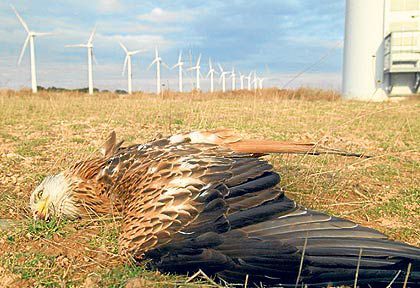An Ellsworth, Maine newspaper columnist lamented voters’ defeat of a transmission line to bring renewable energy. “Talk about mixed messages. We want renewable energy but not here, not now, not this kind. We have to reduce our reliance on fossil fuels, but we won’t support a project to replace them.”
Voter schizophrenia is not unique to Maine – it is nearly universal. It’s understandable because no source of energy is entirely green. For 40 years energy companies, utilities, and government researchers have studied the environmental impacts of energy. In some cases, that impact is immediate and local, as with smokestacks. In others, it’s more long-term and geographically unspecific, as with global warming.
Worldwide, governments have established goals to wean their economies from oil, gas, and coal – the most abundant, affordable, and versatile sources of energy. Their use has created prosperity and history’s highest standard of living. But they also come at an environmental price, as we all understand. So presidents, governors, town councils, prime ministers, monarchs, and legislatures have agreed to reduce the use of fossil fuels and work toward powering their economies with renewables. Unfortunately, there is no such thing.
The sun, of course, is “renewable” in the sense that nothing mankind does affects it. But the solar panels, batteries, and cables used to capture its energy are made of minerals, no more renewable than oil. Running water in rivers is constantly replenished. But dams require concrete and turbines are made of steel and other metals, no more renewable than natural gas. Nuclear power is cheap, but uranium requires mining, no more renewable than coal. What is the answer – electric cars, trucks, buses and trains? That depends on where the electricity comes from. With the current mix of energy sources, that really just means vehicles powered by coal instead of oil.
We spend billions subsidizing wind energy, once thought to be the most promising renewable. But while wind is renewable, wind machines are not. They are manufactured using steel, fiberglass, plastic (oil), iron, copper, and aluminum. They don’t emit greenhouse gases, but mining those materials does. And now, a Justice Department lawsuit sheds shocking light on the impact of wind machines on wildlife.
The first megawatt wind turbines, on California’s Altamont Pass, were fast-spinning propellers that many environmentalists nicknamed “Condor Cuisinarts.” Modern turbines seem to turn slower, but they are so huge that the tips of their blades move at 200 miles an hour. And they still kill thousands of birds every year.
The Justice Department lawsuit, filed against the world’s largest generator of wind power, revealed that the machines have killed tens of thousands of bald eagles. NextEra Energy’s machines in Wyoming are documented to have killed 150 eagles since 2012, and the settlement includes a $150 million fine ($1 million per eagle), along with another $27 million to be spent on “mitigation measures” intended to prevent future eagle kills. Experts say “mitigation” means locating machines away from eagle habitat. In other words, there is no way to stop birds from flying into nearby blades, except not to build them.
Setting aside the irony of government subsidizing and encouraging the development, and then fining companies that participate – and the fact that the government itself put a wind turbine near eagle nests in the Eastern Neck National Wildlife Refuge – killing eagles is illegal. Dead eagle carcasses are shipped to the government’s “Eagle Depository” in Denver. At first, California was the only state with wind turbines in eagle habitat, and the Repository in 1997 reported wind turbines were among the main sources of 800 eagle carcasses it received that year. By 2014, an explosion of wind turbine construction, fueled by federal tax subsidies, raised that number to over 3,000 eagle carcasses annually. So the government stopped reporting the numbers. Today the U.S. has 80 times more wind generation than in 1997.
In 2014 NBC reported that the Repository had processed about 42,000 dead eagles and was receiving 2,500-3,000 more a year. Robert Bryce, of “Power Hungry Podcast” did the math: “over 60,000 eagle carcasses have been secretly shipped to this repository.” That’s because Congress classified wind machine eagle kills as “business trade secrets,” and amended the Freedom of Information Act to exempt this data from public disclosure.
Clearly, all energy decisions bring trade-offs. Long-term climate change that we cannot see or accurately measure, or dead bald eagles that we can? Most of us might be like the Ellsworth voters, who want renewable energy, but not here, not now, not this kind.





Right on Greg! Tried to tell them years ago. A place for renewables but we have to have base load
Always appreciate the balance you bring to our understanding of resource development issues. As I understand it, if renewables are to be used at scale, we will need massive storage (battery) capacity . Who controls the strategic resources required to produce batteries? What is the magnitude of the management toxic waste disposal? As you always remind us, nothing is free when you look at it from a life cycle perspective. And some cannot be scaled at all without incurring unacceptable costs. Would love to see these issues addressed with the same granularity you brought to the costs of wind generators. In the meantime, great commentary!
Comments on this entry are closed.
{ 2 trackbacks }